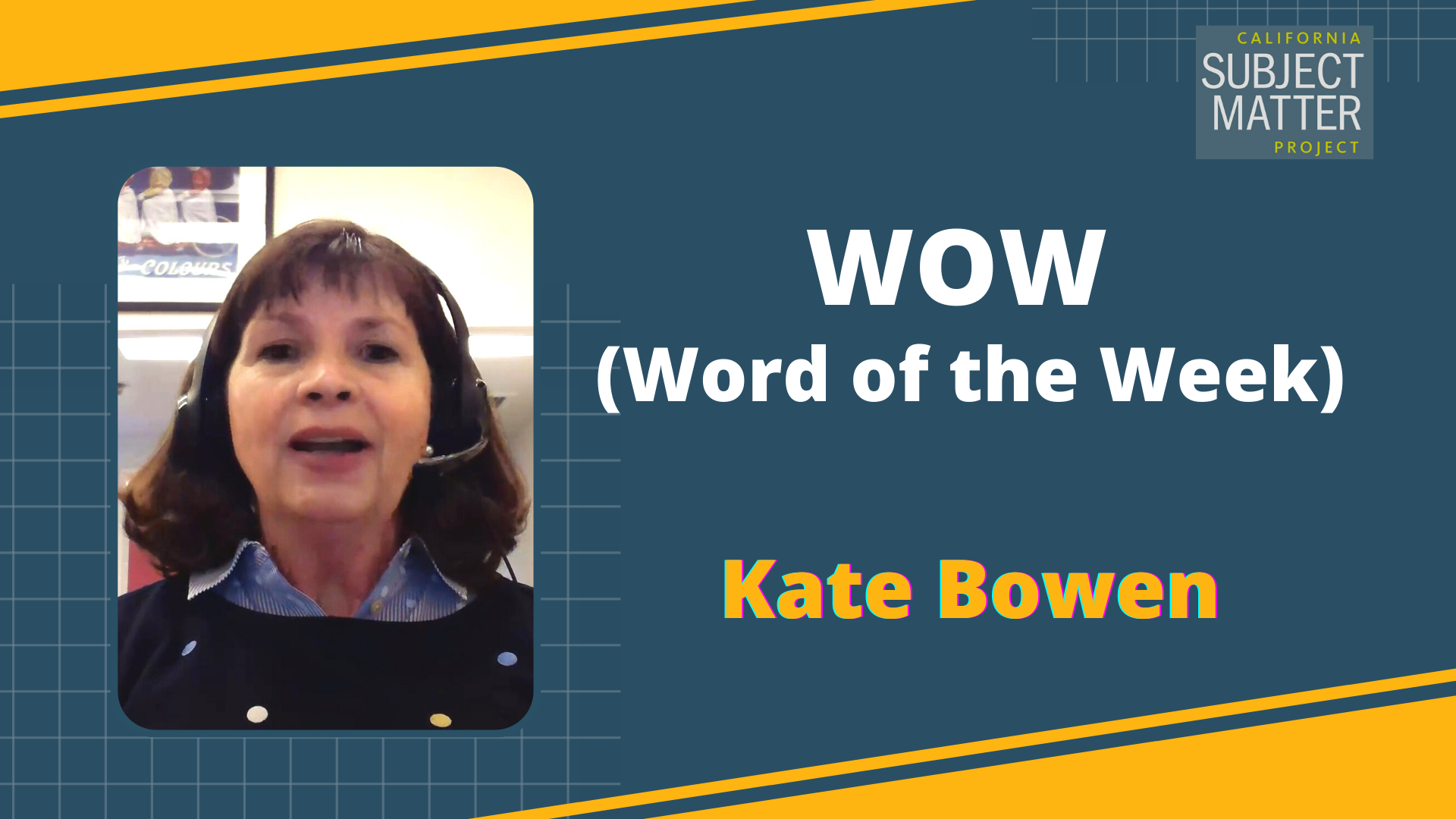Watch the Video
Presenter
Janice Anderson has been in education for over 25 years. She’s a primary grade resource teacher in San Diego at Encanto Elementary School and also a teacher leader with a California Reading and Literacy Project.
Transcript
Hi, my name is Janice Anderson and I have been in education for over 25 years. I am a primary grade resource teacher here in San Diego at Encanto elementary school. I’m also a teacher leader with a California Reading and Literacy Project. According to research, a teacher needs to have a plan to manage the class so that everyone can understand the types of behavior expected and which behaviors may need to be coached.
This allows for an effective and safe learning environment. In our time together, I will share how I lead my classroom and small groups with the ABCs of positive classroom management. Creating a positive classroom, creating positive relationships within your classroom is probably the most important thing you can do to build a classroom community where you teach, students learn, and everyone feels safe.
Having a plan for how you will address behavior allows you to positively respond when expectations are met. Focusing on the positive will reinforce the expectations for all students. The goal is also to encourage behaviors to follow expectations while limiting or reducing behaviors that interfere with learning.
When we create such a plan, we can focus on students following expectations by giving positive feedback and praise while remaining calm and caring. Therefore, the ABCs of positive classroom management is best used before you enter the classroom to allow you to think about how to encourage the expectations you want. To prepare for using the ABCs of positive classroom management, consider three things:
- How will I get the classroom’s attention?
- What behaviors will I expect?
- Which behaviors will I need to explicitly model or coach?
These ABCs are a positive way of interacting and engaging with students at school:
A is for attention. Have a plan for how you will get the attention of students. For example, I have seen teachers raise their hand, make a quiet coyote. There are several calls and responses as well as timers, bells, and music transitions to get the attention of students before giving in instructions.
B is for behavior expectations. Students thrive in a structured environment. This means as teachers, we expect students best behavior throughout the day, which means as teachers we must set students up for success by reminding them of the expectations for the class. For this to happen, we need to plan for students success by communicating expectations in advance.
C is for coaching and modeling, expected behaviors. You have permission to stop the class and redo an expectation. Clearly define expectations and allow students to try again. Please note, there are expectations for everything we do in the classroom.
When it comes to getting students attention throughout the day, we need a few attention getters in order to match the volume of the current activity. For example, if the students have been working quietly, I will use a soft chime, a quiet signal, such as a raised hand and finger over my mouth, or even a countdown to get their attention. “5, 4, 3, eyes on me, 2, voices are off, 1, you’re ready to learn.”
When students have been working in centers labs, or choice time, I set a timer with a verbal warning at the two minute mark and reiterate the cleanup expectations. Earlier, I mentioned, we give expectations for how we want students to line up. This may look like a stand tall, like a pineapple, which means to be tall, wear a crown, and be sweet on the inside, or even a 4S line, which is Silent, Straight, Still and Smiling. Or for third grade and up, explain you are looking for a straight, silent, look-in-front, and hands-to-themselves line. It is also good to note how you want students to move in the line.
There are other expectations for learning, such as share the expectations for students during the activity and what attention getter to listen for to return to their seats. It may sound like this: “in a moment, but not yet, you will share with your partner. Sit knee to knee, eye to eye. Partner A goes first, then partner B shares. Listen for the bell to quickly face front and be ready for the next set of directions.”
Think about what it will look like for students to actively participate during class. Be sure to break down each component so that students are clear on what is expected. I have found it helpful to keep it simple, give one direction at a time and specifically acknowledge students who are following the expectations.
Positive classroom management empowers students to become the best learners they can be while creating their class community. It’s as easy as ABC.



